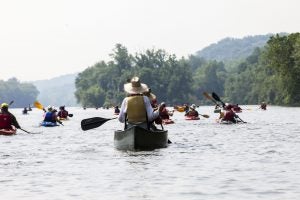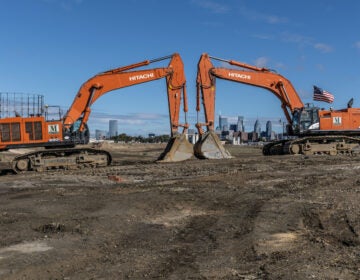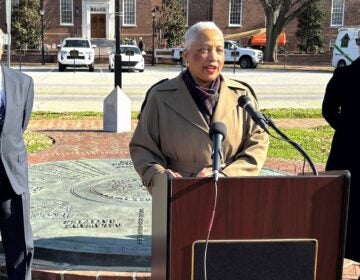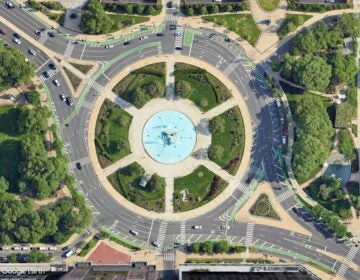When it comes to buffer areas around streams, advocates say size matters
Some Pennsylvania municipalities have rules about leaving undeveloped strips along rivers to protect water quality. Many don't.
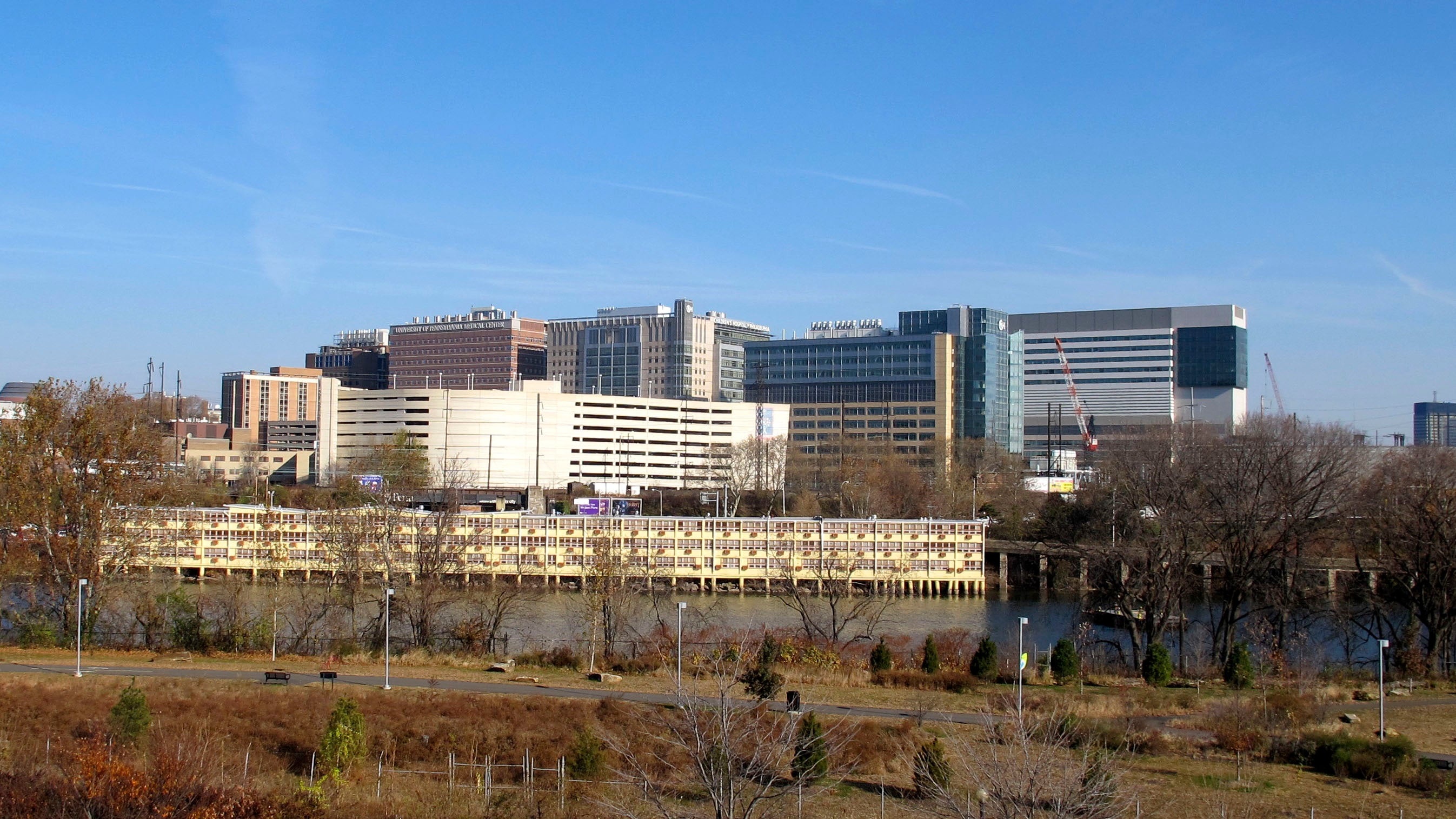
At Grays Ferry Crescent Park (foreground) on the Schuylkill River in Philadelphia, there's buffer zone next to the river. Across the river, the building on stilts is grandfathered in to recent restrictions on the size of buffer zones next to rivers. (Ashley Hahn/PlanPhilly)
A few years ago, when Philadelphia was on the homestretch of rewriting its zoning code, there was a brief kerfuffle over one of the rules that was under debate.
The rule was related to stream buffers, or riparian buffers, which require a certain amount of space to be set aside between new development and the banks of the city’s rivers and streams. Specifically, how big should they be? Environmental advocates favored a bigger buffer, and developers, of course, favored a smaller one. The city eventually settled on 50 feet. (Then briefly disagreed, then agreed again.)
But why do cities enact these buffers in the first place? It’s about water quality, for the most part.
In terms of keeping water sources clean of toxins and pollutants, there aren’t many tools that rival nature. Stormwater runoff rushing toward a waterway is slowed and often absorbed altogether if there’s a solid patch of native plants near the bank. Building permanent structures in that area prevents that growth, and allows whatever’s floating in the runoff—like leaked gasoline or other vehicle fluids carried off of a parking lot or driveway—to flow directly into the water. Letting vegetation grow also strengthens streambanks and prevents erosion.
Property owners sometimes don’t like these rules because they see them as interfering with their rights to do what they want with their land. Last year, former Governor Tom Corbett signed a state law that removed a required 150-foot buffer adjacent to the state’s cleanest forested waterways, those deemed to be of “exceptional value.” The bill was supported by the Pennsylvania Builders Association.
In cities, the value of waterways tends to be less exceptional, and so the buffers tend to be shorter. Philadelphia’s 50-foot buffer applies to all the waterways in the city. Buildings that were built in the buffer zone before the law went into effect are grandfathered in, but they’re only allowed to expand so much.
In Pittsburgh, a riverfront zoning overlay requires new development to be set back at least 50 feet from the Allegheny, Ohio, and Monongahela rivers. Allentown includes a vegetated buffer as a “best practice” in its land development code.
Protecting river water quality
Environmental groups in Pennsylvania have been pushing other municipalities across the state to adopt buffer requirements of their own. Brandywine Conservancy, which works in the suburban areas around Philadelphia, advocates a 100-foot buffer as the gold standard.
“A 50-foot buffer might get some of the pollutants out and some of the sediment, but a 100-foot is going to get smaller sediments out,” said Seung Ah Byun, a water resources planner at Brandywine.
One hundred feet seems to be the threshold above which the returns, in terms of cleanliness, are marginal, according to Byun, though the group still pushes for 150-foot buffers for the most pristine forested streams. Byun said it can be difficult to track buffer ordinances because they’re not uniform, and often show up in different parts of legal codes, but she estimates that 70 percent of municipalities in the counties surrounding Philadelphia have some type of buffer requirement.
Municipalities that resist the ordinances usually do so because they’re in the midst of zoning-code overhauls, or because they’re waiting to see what their neighboring towns will do. Some also hesitate because they’re concerned about getting sued by property owners who might claim that a buffer requirement constitutes an unlawful taking of their property. But advocates say that these types of regulation are well founded in the state constitution, and backed up by case law.
Buffers are particularly important for upstream communities, according to Mike Roles, a program organizer with Clean Water Action in Philadelphia.
Since everything flows downstream, keeping rivers clean at the source keeps them cleaner the whole way down. The Tookany/Tacony-Frankford Watershed Partnership, a group based in Philadelphia, holds regular riparian plantings near stream headwaters outside of city limits, with the goal of keeping the whole watershed clean.
“Water knows no political bounds,” said Roles.
WHYY is your source for fact-based, in-depth journalism and information. As a nonprofit organization, we rely on financial support from readers like you. Please give today.



